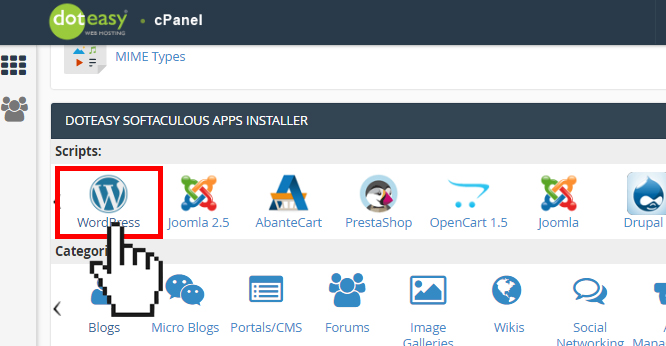
The cookie is used to store the user consent for the cookies in the category "Performance".

This cookie is set by GDPR Cookie Consent plugin. The cookie is used to store the user consent for the cookies in the category "Other. The cookies is used to store the user consent for the cookies in the category "Necessary".

The cookie is set by GDPR cookie consent to record the user consent for the cookies in the category "Functional". The cookie is used to store the user consent for the cookies in the category "Analytics". These cookies ensure basic functionalities and security features of the website, anonymously. Necessary cookies are absolutely essential for the website to function properly.
#Cpanel install install
Select the file, and then click Install to install the file.Īdvantage of this approach is that the service can be tailored to the specific needs of the given application. In the dialog box that is displayed, click Choose file… to locate the file to upload. Steps In the toolbar, click, and then click HTTPS Certificate from the Setup menu. At the Generate Certificate step of the wizard, specify a friendly name for the created self-signed TLS certificate. At the Certificate Type step of the wizard, select Generate new certificate. To generate a self-signed TLS certificate: From the main menu, select General Options. How do I generate a self signed certificate? In the Certificates window, on the Personal tab, you should see your Client Certificate. Under HTTPS/SSL, click Manage certificates. On the Settings page, below Default browser, click Show advanced settings. In the Personal Certificates folder, you will find both the CA and the Self-Signed Certificate that we created in the previous steps.
#Cpanel install windows
Msc in the windows search bar and choosing “Run as administrator.” Expand both the “Personal” and “Trusted Root Certification” directories. How can I tell if a Windows certificate is self-signed? Once it is renewed, it will show the extended expiry date. Click on Reset Certificate to renew the each certificate.

It will show the list of available self-signed certificates. Once you are logged in, Go to Home > Service configuration > Manage Service SSL certificate. How do I renew my self-signed certificate cPanel? Click the trash bin icon to remove the certificate. In the Self-Signed Certificates section, navigate to the certificate that you want to remove. How do I remove a self-signed SSL certificate?įrom the top menu bar, click System > Certificates. In the case of accessing your own server this isn’t a problem at all, and you can simply tell your web-browser to accept the self-signed SSL certificate and continue. This warning is simply letting you know that the SSL certificate was self-signed. One of the easiest ways to check if that’s true is to run ssllabs test. The first possible cause that I found was this: my server isn’t providing an intermediate certificate as it should in the TLS handshake. Either it is self-signed (which will cause browser warnings ) or it is invalid. How do I enable SSL on cPanel?Ĭan’t validate SSL certificate either it is self-signed?Ĭan’t validate SSL Certifiate.
#Cpanel install full
Though the certificate implements full encryption, visitors to your site will see a browser warning indicating that the certificate should not be trusted. When using the SSL for non-production applications or other experiments you can use a self-signed SSL certificate. Under Actions, click Delete for the certificate you wish to delete. Under Certificates (CRT), click Generate, view, upload, or delete SSL certificates. In the cPanel Home page, under Security, click SSL/TLS. How do I remove a self-signed SSL certificate from cPanel?


 0 kommentar(er)
0 kommentar(er)
